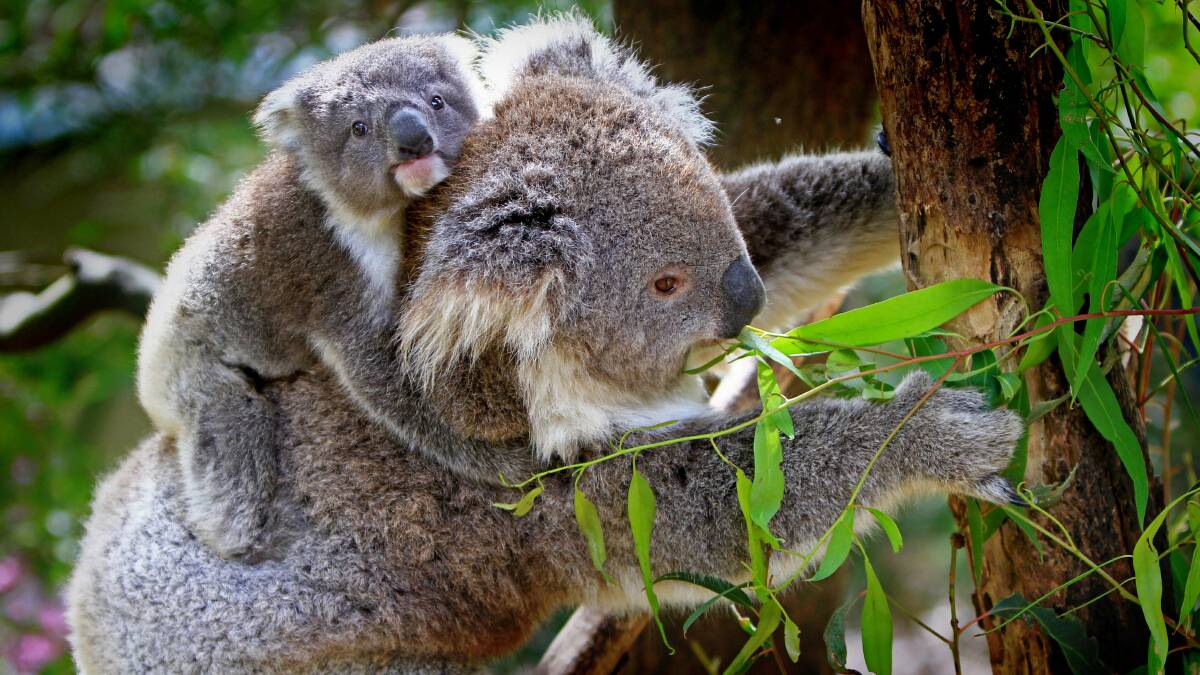
Local campaigners say they feel the Far South Coast’s koala population has been “completely ignored” within the state government’s new strategy to prevent the marsupials’ extinction.
Subscribe now for unlimited access.
$0/
(min cost $0)
or signup to continue reading
With the state’s koala population declining by more than a quarter over the last 20 years, the government has committed $44.7million over the next three years to implement what it has called the NSW Koala Strategy.
Forest campaigner Harriett Swift said the “small” and “surviving” Far South Coast population of “between 50 and 60 koalas” has been excluded from the strategy.
“The strategy itself assumes that enough has already been done for the South Coast koalas,” she said.
Premier Gladys Berejiklian said the “unprecedented action is the first part of a long-term investment” by the government, which “will guarantee koalas have a very bright future in this state”.
“It is absolutely vital that we protect land where koalas currently live - and secure land where new koala colonies may exist in the future,” Environment Minister Gabrielle Upton said after the strategy was announced.
The strategy will set aside more than 20,000 hectares of state forest on the Central Coast, Southern Highlands, North Coast, Hawkesbury and Hunter as new koala reserves, and transfer 4000 hectares of native forest on the Mid North Coast to the national parks estate.
A further $20million from the NSW Environmental Trust will be used to “purchase land with prime koala habitat that can be permanently reserved as national parks”.
Fixing priority road-kill hotspots across NSW, creating a network of koala and wildlife hospitals and a single wildlife rescue call number will also be part of the new strategy.
However, Ms Swift said the strategy does not go far enough to assist the Far South Coast koala population, which the government said will continue to be part of the Saving our Species threatened species program.
The National Parks Association of NSW said they fear the strategy “will prove inadequate and a waste of money under current policy settings” and “woodchipping in southern NSW is completely ignored” within the strategy, “with no koala habitat identified for protection”.
"The government removed the brakes on deforestation on private land in 2016, and now plans to spend $20million to buy habitat at risk due to that decision. That's a questionable use of public money,” NPA senior ecologist Oisín Sweeney said.
“The best chance to recover koalas are large, well connected reserves that protect habitat and provide east-west links to deal with climate change. Small isolated patches are highly vulnerable to catastrophic events like fire and ignore the threat of climate change.”
In 2016 the state government asked NSW Chief Scientist and Engineer Professor Mary O'Kane to establish and chair a committee to independently review the decline in koala populations in key areas of NSW.
The review found many of the threats to their numbers “are unlikely to abate and several will be intensified or exacerbated by climate change”.
The review’s 11 recommendations include at first stabilising and then increasing koala numbers, involving traditional owners into localised strategies and improving data collection on the number, location and occurrence of koalas.
Djiringanj elder and chair of the Merrimans Local Aboriginal Land Council Ken Campbell said land should be allocated for koala protection as women and children from the community have seen koalas both north and south of Bermagui.
“A few people have also seen them crossing roads just out of town towards Cobargo and Cuttagee, so they are around,” he said.
“We’ve got people going and spotting them and their scats, and they’ve seen a few around Mumbulla Mountain, but where are they going to go if they keep logging?”
Shadow Minister for the Environment Penny Sharpe said the strategy “provides nothing more than a flimsy cover for the destruction of koala habitat that has happened under this government”.
“Whether koala habitat has been sold off to developers or been allowed to be cleared indiscriminately, the message is simple, you cannot pretend to care about koalas if you allow the destruction of the trees and land they need to survive,” she said.


